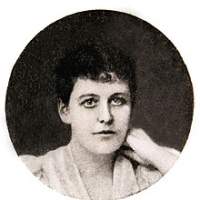At midday on March 29, 1914, a yacht named Mana, flying the British colors, dropped anchor in the tiny inlet of Cook's Bay, Hanga Roa. On board was an anthropologist who would carry out the first systematic survey of the Easter Island statues, and who would also record the last memories of a dying generation that had witnessed the rituals of the Birdman cult.
That the visitor was English is not surprising. Britain was still a mighty seagoing imperial power; the World War I, which would change all that, was brewing even as Mana arrived at Easter Island.
More striking, however, is that the visitor was a woman, Katherine Routledge. Together with her husband, William Scoresby Routledge, Katherine spent 17 months on the island, departing it Aug. 18, 1915, under the looming threat of German gunboats.
Katherine's account of the trip, "The Mystery of Easter Island: The Story of an Expedition," appeared in 1919 and was republished last year.
Remarkably, the measurements and field notes Katherine made are still being used today. Her work is currently in the hands of another female archaeologist, Jo Anne Van Tilburg, a research associate of the Cotsen Institute of Archaeology, University of California, Los Angeles, and creator of the Easter Island Statue Project (see interviews).
Since starting their biannual fieldwork in 1982, Van Tilburg and her team have made meticulous observations of two-thirds of the island's 887 statues, not only taking measurements and noting distinctive features such as markings or decoration, but also charting the rate of deterioration of many of the statues as they are eroded by the elements or damaged by human and animal activity.
The result is a sophisticated database profile of each statue -- including photographs and drawings, many of the latter made by Van Tilburg's collaborator, Rapa Nui artist Cristin Arvalo Pakarati -- that also incorporates layers of information accumulated by earlier scholars. "The database is broad and deep," says Van Tilburg. "It has a depth of up to 80 years, going back to the Routledge notes."
Van Tilburg's admiration for Routledge led her to publish, in 2003, a biography of the pioneering anthropologist titled "Among Stone Giants: The Life of Katherine Routledge and Her Remarkable Expedition to Easter Island." This sympathetic and involving study is enriched by the way Van Tilburg draws on personal experience when interpreting Katherine's actions on the island during what proved to be a tense time, with unrest flaring there and conflict between the European powers raging on the seas encircling it.
"Everything about her life on the island was clear to me," the UCLA scholar says. "I didn't stumble. I understood what it was like to be a woman on the island, to be an investigator on the island. I also understood many things about being a woman in a man's world -- archaeology is still very much a man's world."
Although Katherine takes center stage, Van Tilburg brings to life the strong cast of supporting characters: Scoresby; Percy Edmunds, the island's ranch manager and port captain; the local women such as Victoria Veriamu, who acted as Katherine's consultants; and, above all, the charismatic Juan Tepano, Veriamu's son, who became Katherine's right-hand man.
Tepano was caught in an ambiguous position between the local people -- he was jefe, or headman, of Hanga Roa -- and the exploitative management of the ranch, of which he was foreman.
"Tepano had to function in two worlds," says Van Tilburg, "and he wasn't always very successful. The locals respected him, but they weren't necessarily afraid of him."
Nonetheless, Katherine was outspoken in her praise of Tepano. "Any real success of the Mana expedition," she once said, "was due to the intelligence of one individual known as Juan Tepano."
It seemed remarkably fitting, therefore, when Van Tilburg discovered that her own Rapa Nui right-hand man, Pakarati, is a direct descendant of Tepano.
"Can you imagine?" she says, laughing, as Pakarati smiles. The two are now creating a gallery -- named the Mana Gallery, and opening November 2005 -- to host displays of work by Rapa Nui artists. The building, designed by Van Tilburg's architect husband Johannes Van Tilburg, has a traditional rectangular Rapa Nui floorplan, and rests on a platform with a distinctive prow and stern, resembling an island canoe. It faces westward, into favored Polynsesian winds, and visitors will be able to watch the sun set over Ahu Tahai, one of the islands most impressive ceremonial centers.
The Mana Gallery, which is being funded by sales of "Among Stone Giants," is more than an art space. The sweeping wood and stone building will house the EISP archive and information kiosk, where islanders and visitors alike can access the project's database, the fruit of the collaborations between, among others, Routledge and Tepano, and Van Tilburg and Pakarati.
Sadly, Routledgee's story ended less happily. She arrived home in February 1916 to the news that her mother had died, and thereafter occupied herself writing up the Mana expedition, and delivering a paper to the Royal Geographical Society.
By 1919, however, it was plain that Katherine's mental health was deteriorating -- there was a family history of schizophrenia, and her brother Harold had died in Holloway Sanitorium in central London after 22 years of incarceration there.
The Routledges spent the years 1920-23 conducting exploration and research in Jamaica, Tahiti, Moorea and the Austral Islands, but returned home to more bad news, the death of Katherine's favorite brother, Wilson. Again, Routledge soldiered on with scientific work, but by 1926 she was hearing voices and by 1927 she was displaying signs of acute paranoia.
The following year she refused Scoresby's request for a separation, and as her bizarre behavior persisted, he had her forcibly committed to Ticehurst House in Sussex, a place Katherine called "The Lunatic Asylum." She died there eight years later, at the age of 69.





